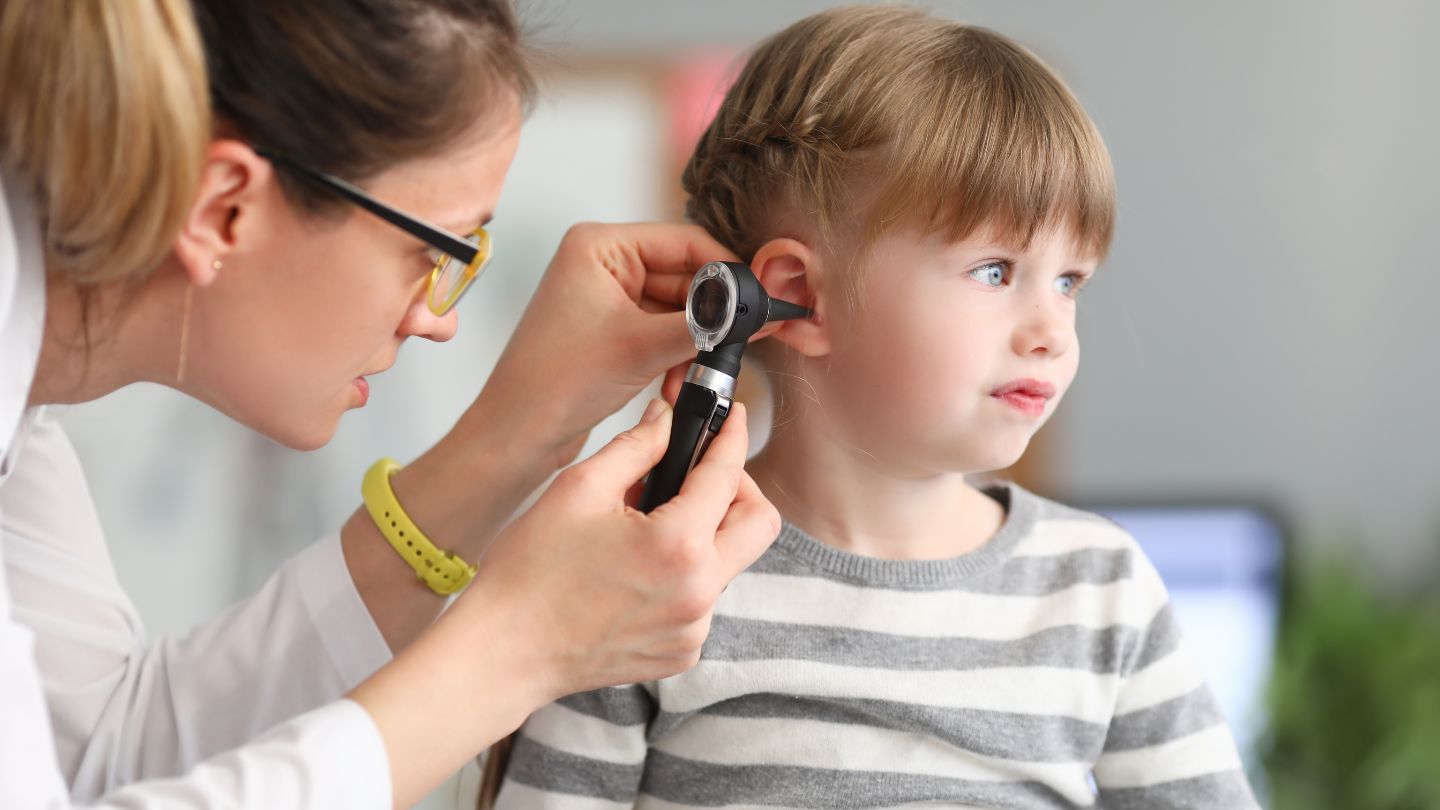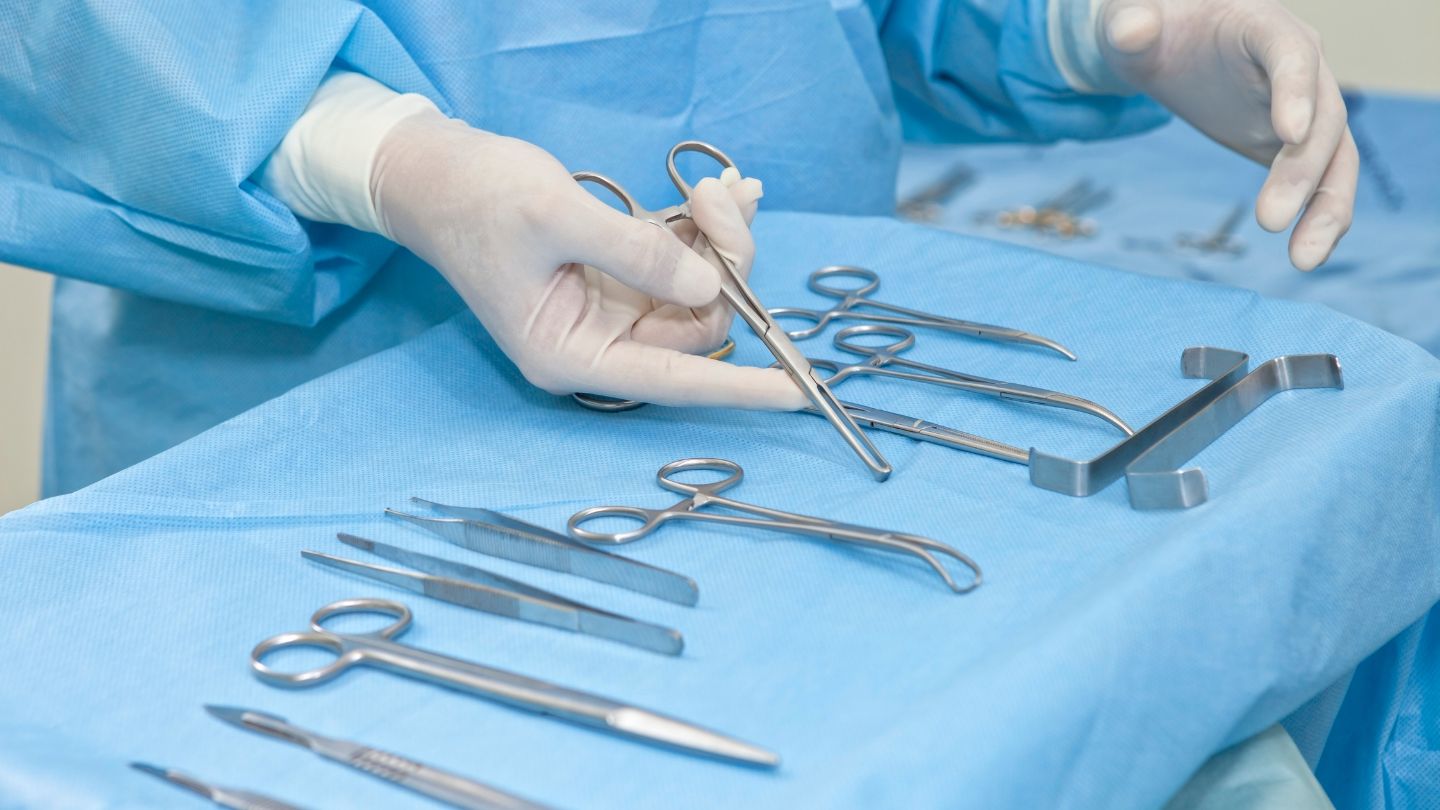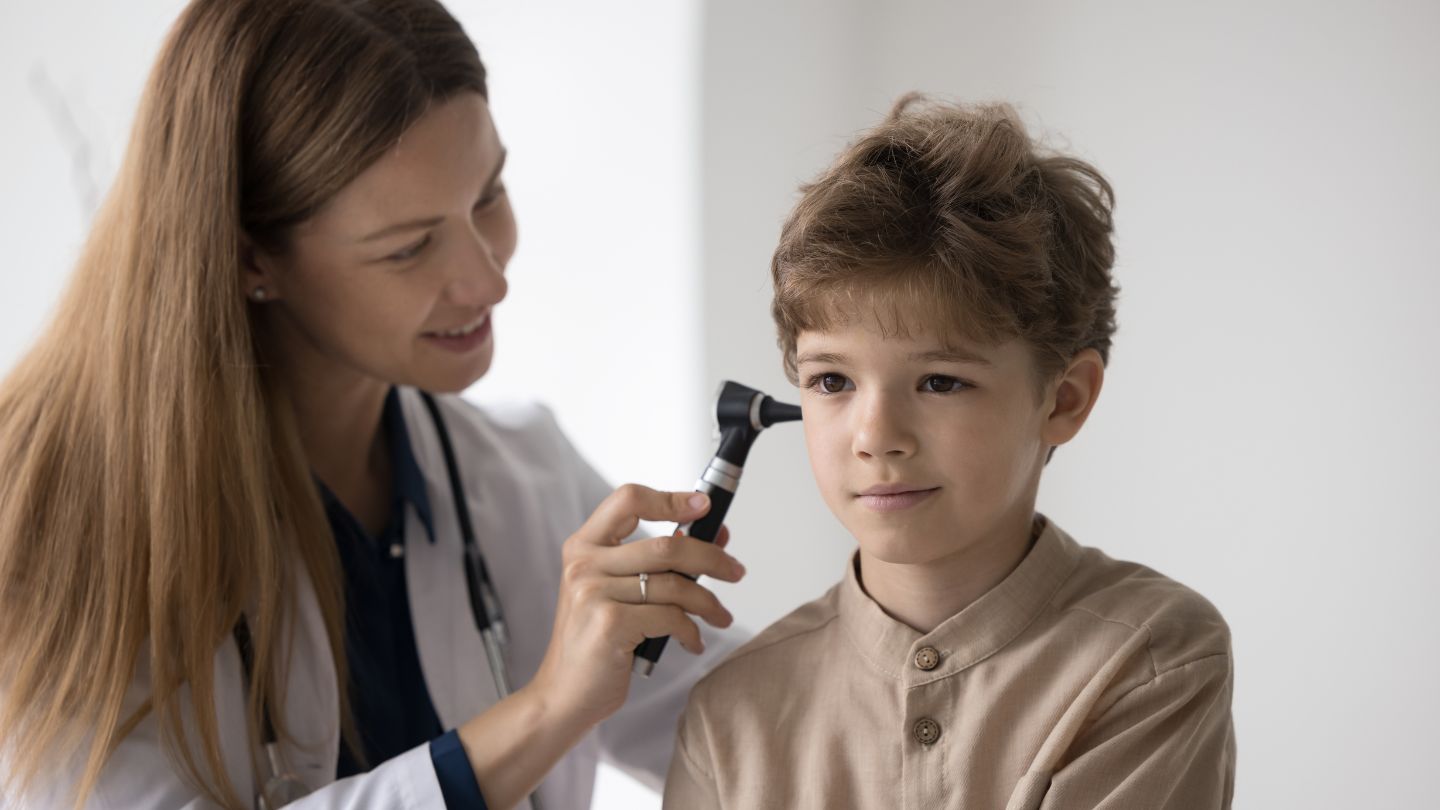Ear tube surgery is a quick procedure, taking only 5 to 15 minutes. So, how long does ear tube surgery take, including preparation and recovery time? The whole process lasts a few hours. In this guide, we’ll explain each phase—preparation, surgery, and recovery—so you know exactly what to expect.
Key Takeaways
- Ear tube surgery is a quick procedure, lasting only 5 to 15 minutes, with a preparation phase of 30 to 45 minutes and a post-operative recovery of about 1 hour.
- The surgery involves general anesthesia, a small incision in the eardrum, and the insertion of tympanostomy tubes to alleviate ear infections and improve hearing.
- Choosing a specialized clinic like Pediatric ENT of Atlanta ensures expert care and a family-centered approach, enhancing the overall experience and recovery for children.
Duration of Ear Tube Surgery
The procedure of ear tube surgery is celebrated for its rapid and streamlined process. The insertion of the ear tube, which is a key part of this minor surgical operation, aims to be successful in outcome while causing minimal interference with your child’s routine activities.
Understanding the duration of every step involved in the tube surgery can assist you in planning ahead and reducing any concerns you may have.
Time Spent in Surgery
Ear tube surgery, which is a surgical procedure that usually takes only 5 to 15 minutes to complete, is among the most frequently performed surgeries in children. The quick nature of this surgery contributes significantly to its commonality, as it minimizes the length of time your child has to remain in the operating room and promotes rapid recovery.
Due to the brief duration of ear tube insertion, surgeons can concentrate on executing the operation with meticulous attention and care. This ensures that not only is the process efficient, but it also lessens any stress or discomfort for your child.
Preparation Time
Prior to the commencement of surgical operations, a preparatory stage consisting of various critical steps is undertaken. A principal element within this phase is the application of general anesthesia, which guarantees that your child experiences no discomfort or pain during the surgery. This initial phase could extend for an extra 30 to 45 minutes as it includes not only the administration but also ensuring your child is fully prepped for surgery.
This preliminary groundwork paves the way for a successful operation. The medical team employs all requisite safety measures with meticulous care so that your child’s well-being and comfort are safeguarded, thereby facilitating an efficient and expeditious surgical process.
Post-Surgery Recovery
After the completion of ear tube surgery, there is an initial period of recovery where your child will spend approximately one hour waking from anesthesia. During this time, vigilant supervision allows for the immediate identification and management of any complications that may arise, offering reassurance to parents during their child’s recuperation.
Once past this stage, children typically need only a few additional hours before being discharged based on how they are feeling post-surgery. The quick return to regular activities marks ear tube surgery as a practical approach for persistent issues with the ear in most children.
What Happens During Ear Tube Surgery?
Gaining insight into the ear tube surgery process can ease concerns and clarify what to expect for you or your child. This surgical procedure is often prescribed for children who are struggling with persistent ear infections or have fluid accumulation affecting their hearing abilities.
Let’s examine each stage of the tube surgery in detail.
Administering Anesthesia
The role of a pediatric anesthesiologist is crucial in administering general anesthesia to guarantee that your child experiences no pain or discomfort during the surgical process. By utilizing inhalation techniques, the anesthesiologist ensures your child swiftly enters and remains in a state of sleep throughout the operation, thereby reducing any potential distress or anxiety.
Employing general anesthesia ensures that both patient comfort and unawareness are maintained for the duration of surgery. This not only allows your child to have a procedure free from stress but also allows the surgeon to carry out their work with meticulous attention and exactitude.
Making the Incision
Under anesthesia, the surgeon creates a minor cut in the eardrum to reach the middle ear. This allows for the draining of any accumulated fluid and relieves pressure or infection. The procedure’s minimally invasive approach ensures that only a small incision is made, which helps shorten recovery duration and lessen pain.
This strategic incision enables the surgeon to address issues within the middle ear effectively, such as chronic ear infections and fluid accumulation—key factors for achieving successful surgical outcomes and maintaining your child’s long-term auditory well-being.
Placing the Tubes
Small tubes, known as tympanostomy or myringotomy tubes, are inserted into the eardrum by the surgeon through an incision to enhance aeration and forestall subsequent infections. By helping to drain fluid that accumulates in the middle ear, these ear tubes play a crucial role in diminishing infection risks and enhancing auditory capabilities.
The purpose of installing these tiny devices is to maintain an aerated state within the middle ear space, ensuring it remains clear of any liquid congestion. Typically, these tympanostomy tubes will stay securely positioned for a duration ranging from 6 to 18 months before they naturally fall out of the ear or are extracted by a medical professional.
Preparing Your Child for Ear Tube Surgery
To get your child ready for ear tube surgery, it’s essential to meticulously follow the preoperative guidelines given by their physician. Adhering to these directives is vital not only for the successful outcome of the tube surgery but also for safeguarding your child’s health.
Keeping a cheerful and comforting demeanor is critical in making sure that your child feels safe and at ease during this process.
Pre-Surgery Instructions
It is crucial to adhere to the given directions on the day of the operation. To avoid any issues while under anesthesia, which may necessitate postponing the surgery, children are advised against eating or drinking prior to their procedure.
It’s beneficial for parents to reassure their child that having ear tubes placed can enhance auditory capabilities and alleviate discomfort in the ear. This explanation might help lessen any apprehension concerning undergoing surgery to insert ear tubes.
Day of Surgery
Taking along cherished items such as a beloved stuffed toy or a treasured blanket on the day of an operation can offer solace and comfort, helping soothe your child’s anxiety and render the ordeal more bearable.
Employing diversion tactics such as entertaining videos or captivating tasks may assist in maintaining your child’s ease. It is essential for their tranquility and contentment to be prioritized for a smooth, worry-free surgical procedure.
Post-Surgery Care and Recovery
Post-surgery care and recovery are vital for the success of the ear tube surgery and your child’s well-being. Knowing what to expect and how to care for your child can ease the recovery process.
Immediate Aftercare
After surgery, children often feel tired or slightly unsteady due to anesthesia. Mild ear drainage is normal for the first one to two days. To prevent infections, antibiotic ear drops are typically prescribed, usually administered twice daily for five days.
Close monitoring during this period ensures a smooth recovery. Report any unusual symptoms to the healthcare provider promptly to address potential complications.
Follow-Up Appointments
Post-operative care for ear tube insertion is significantly enhanced by follow-up appointments, usually scheduled several weeks following the surgery. These check-ups are essential as they evaluate the positioning of the ear tubes and oversee the healing process to guarantee that the tubes effectively safeguard against subsequent infections and uphold auditory wellness.
Should you observe any abnormal symptoms, such as dense or malodorous discharge from your child’s ears, it is imperative to get in touch with your healthcare provider immediately. Swift attention can resolve potential problems promptly, securing an optimal result for your child’s ear health.
Long-Term Care
Ear tubes usually remain in place for 6 to 18 months, providing continuous ventilation and reducing infection risks. If they do not fall out on their own, the doctor can remove them with a simple procedure.
Mild post-surgery pain can be managed with over-the-counter medications like Ibuprofen or Tylenol. Proper care and monitoring during this period are crucial for the surgery’s long-term success.
Wrapping Up
In summary, ear tube surgery is a quick and minimally invasive procedure, typically taking just 5 to 15 minutes for the surgery itself. Including preparation and recovery, the entire process is straightforward and offers significant benefits such as fewer ear infections and improved hearing. For children dealing with chronic ear infections, this procedure can be life-changing, providing lasting relief and enhancing their overall quality of life.
If you’re searching for expert care for ear tubes for children in Atlanta, our team is here to help. We at Pediatric Ear Nose and Throat of Atlanta, P.C., specialize in compassionate, family-centered care tailored to your child’s unique needs. Contact us today to schedule a consultation and take the first step toward better health and peace of mind for your child.
Frequently Asked Questions
How long does ear tube surgery take?
Ear tube surgery typically takes about 5 to 15 minutes, but you should also allow extra time for preparation and recovery.
What are the benefits of ear tube surgery for my child?
Ear tube surgery can substantially decrease the frequency of ear infections and improve hearing, ultimately enhancing your child’s quality of life and engagement in daily activities.
How do I prepare my child for ear tube surgery?
To prepare your child for ear tube surgery, strictly adhere to the doctor’s pre-surgery instructions regarding food and liquids.
Additionally, bring comforting items and utilize distraction techniques to help alleviate your child’s anxiety on the day of the procedure.











